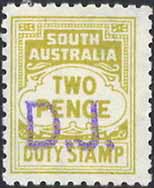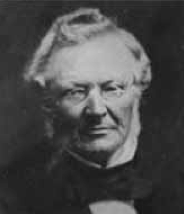|
Private Revenue Perfins of South Australia An Elsmore Coath Howard production The authors would welcome your comments additions or input into this work
Back to SA 'Other' page Back to States Perfin index Back to Commercial Overprint index Section 2 - Commercial Overprints D -------------------------------------------------------- D.J..a
User: David Jones Haberdashery & Department Store Address: 100 Rundle St, Adelaide, SA. Revenue Use: 1966 Series 2c. Rarity Scale:
1966 Series 2c R4 Background: *David Jones, was born on 8 March 1793, the son of Thomas and Nancy Jones, farmers from Llandeilo, Wales. Jones was apprenticed to a grocer and at the age of just 18 was given management of a general store in Eglwyswrw, Pembrokeshire. Jones married in 1813 but his wife Catherine Hughes died in childbirth, Jones remarried in September 1822 to Elizabeth Williams who died in 1826. Jones moved to London, finding work in the retail trade and in 1828 he married Jane Hall. It was through her family and religious (they were Independents, that is Protestant Christians but not aligned to any denomination) connections and those of his employers that he met the visiting businessman Charles Appleton, from Hobart, who had opened a store in Sydney in 1825. Jones resigned his job and entered into partnership with Appleton, which included the Australian branches under the style of Appleton & Co. In October 1834 Jones sailed with his family for Hobart, and spent time in Launceston before arriving in Sydney in September 1835. Appleton had a partner in Sydney named Robert Bourne, but this partnership expired at the end of 1835 and the company became Appleton & Jones. Shortly after this Appleton joined Jones in Sydney but they had some disagreements about credit policies and the partnership was dissolved by mutual consent in 1838. After the split Jones moved to premises on the corner of George Street and Barrack Lane. Jones formed associations with family friends and 'Independents' in London to secure stock and arranged back loads of wool and tallow and other produce from the colonies. Jones business prospered despite
the depression of the 1840’s and by 1856 he took on
partners and retired from active management. However
the firm did not do well and soon after Jones had to
buy out his partners and return to managing the
business. Borrowing heavily and making new
partnerships he was able to turn the business around
and pay out the company’s debts. He finally retired
in 1868 and died at his home in Lyons Terrace,
Liverpool Street, Sydney, on 29 March 1873. His wife
died three weeks later, aged 71. As a businessman Jones did not limit himself to retail and he had many interests including investments in banks, steamships, building and insurance, where he was a director of the Mutual Fire Insurance Co. and the Australian Mutual Provident Society. He also had political involvements as a member of the first Sydney City Council (1842) and of the New South Wales Legislative Council in 1856-60. Jones had four sons and four
daughters by his third marriage. The eldest son
David and his brother George became pastoralists,
his second son, Philip (later Sir) became a
physician and the youngest son, Edward succeeded his
father in the business.
David Jones c1860 David Jones was a Welsh merchant who met Hobart businessman Charles Appleton in London. Appleton had established a store in Sydney in 1825 and Jones subsequently established a partnership with Appleton and moved to Australia in 1835, and the Sydney store became known as Appleton & Jones. When the partnership was dissolved in 1838, Jones moved his business to premises on the corner of George Street and Barrack Lane, Sydney. Jones survived the depression of the 1840s, and by 1856 had retired from active management of the business. A few years later when the firm failed, Jones returned to manage its affairs and in a few years had fully discharged all obligations to his creditors. By 1887, the George Street Sydney store had been rebuilt and a mail order facility introduced. A factory was opened in Marlborough Street, Sydney to reduce reliance on imported goods. In 1906, David Jones announced it would become a public company. By 1959, the store network had expanded to eight stores, and by 1980 David Jones had moved into Queensland, ACT, Victoria and South Australia. Device: Handstamped Related patterns: Refer David Jones Limited
patterns in: NSW: Perfin section: DAVID JONES LD.a DJ/LTD.a
DJ/LTD.b DJ/LTD.c DJ/LTD.d DJ/LTD.e DJ/LTD.f Other – Section 1 Cancelling Devices:
PAID/D.JONES&Co.a Other - Section 2 Commercial Overprints: DAVID/JONES/LTD.a DAVID/JONES/LTD.b DAVID/JONES/LTD.c DAVID/JONES/LTD.d DAVID JONES
LTD.e DAVID JONES/LTD.f DAVID JONES/LTD.g QLD: Other - Section 2 Commercial Overprints: DAVID
JONES WA: Other - Section 2 Commercial Overprints: DAVID
JONES/(PERTH)/LTD..a *David Jones website -------------------------------------------------------
Back to SA 'Other' page Back to States Perfin index Back to Commercial Overprint index © copyright 2011 |

